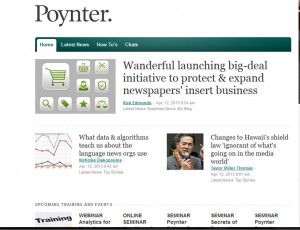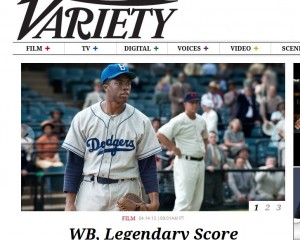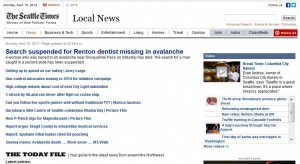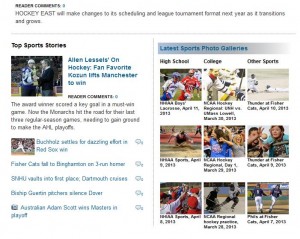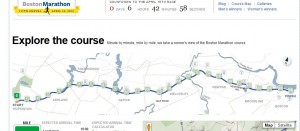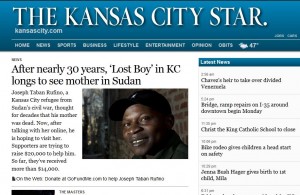[wpdm_file id=7]
Unit Six: Writing Online
Summary for teachers of lesson’s objectives:
- Teacher Objective: to help students learn how writing for the web differs from linear writing
- Student Objective: to become familiar with writing for the web
In the interest of making the online newspaper responsive to our readers and accessible to them also, teachers and students need to learn to write for the web.
“Today, all management and staff levels must therefore embody a level of web competence, especially improved understanding of key technologies, programming and integration of different media channels into one web platform.” (Boers, Ercan, Rinsdorf, & Vaagan, 2012)
Activity:
COMMUNICATION AND COLLABORATION:
HOMEWORK ASSESSMENT: Student groups present their questions. One person from each group will be the anonymous person each group decided on. Each group will take turns interviewing their person with their questions. The rest of the class will try to guess who the person is from the interview.
Teacher: The textbook for this class, “Telling The Story,” sums up the main difference between print newspapers and web-based papers: “The Reader Rules.” (Brooks, Kennedy, Moen, & Ranly, 2010) The authors propose three rules to guide students in writing for the web:
- The reader rules
- The writing is nonlinear
- Structure is everything
Online the readers are the decision makers about where and when they will get their news. “Every reader is different; every reader has different needs. Every reader, therefore, not only will select what to read, but also will choose a path that best meets those needs.” (Brooks, Kennedy, Moen, & Ranly, 2010)
Teacher: Present the 10 guidelines for writing online from “Telling The Story.”
1. Think Immediacy:“You must update breaking stories quickly and add depth whenever possible.”
http://www.chicagotribune.com/
2. Save Reader’s Time: Ask yourself: “Have I presented this information in such a way as to cost readers the least amount of time?”
http://www.washingtonpost.com/?reload=true
3.Provide Information That’s Quick and Easy to Get: Your story has to look easy to navigate.
4.Think Both Verbally and Visually: “You have to think not only about organization of the page but also about ways to use graphics, to be interactive and to use online tools.”
5.Cut Copy in Half: “Most online readers won’t read long stories.”
http://www.nytimes.com/2013/04/14/fashion/jenna-marbles.html?pagewanted=all
6.Use Lots of Lists and Bullets: “Think of information on the Web as a database. That’s how people use their computers, and that’s how they use the Web.”
http://seattletimes.com/html/localnews/?from=stnv1
7.Write in Chunks: “Put information in sidebars or boxes…think of your story having parts.”
http://www.unionleader.com/section/sports
8.Use Hyperlinks: “Being connected means being interactive. Web users want to be actively involved in what they are reading.”
http://www.boston.com/sports/marathon/course/map/
9.Give Readers a Chance to Talk Back: “Everyone feels the right and often the need to write back.”
http://www.miamiherald.com/2013/04/14/3339188/legislators-grapples-with-what.html
10.Don’t Forget the Human Touch: “Remember people make the news. Facts are just facts unless you relate them to people.” (Brooks, Kennedy, Moen, & Ranly, 2010)
Walter Williams’ Journalist’s Creed
I BELIEVE THAT SUPPRESSION OF THE NEWS, FOR ANY CONSIDERATION OTHER THAN THE WELFARE OF SOCIETY, IS INDEFENSIBLE.
Teacher: Discuss “suppression of the news.”
Homework:
Read “Telling The Story” pages 280-303
Teacher explanation: The purpose of this homework is to become familiar with the design of web-based newspapers.
To Do: (Collaboration and Cooperation)
Students will switch groups from last week. They will take the 10 guidelines for writing online from our textbook and find examples of each in city newspapers around the country. They will use examples other than the ones in this lesson. Meet on Facebook and post your examples from your team. Then comment on two other examples from the other team.
Assessment: Homework will help the students start to identify features they might like to include in the online newspaper.




